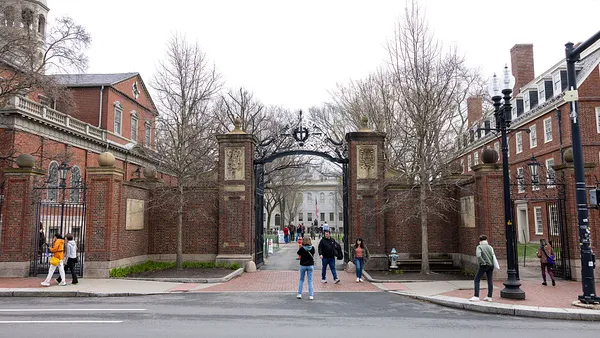Dive Brief:
- Despite general declines in state funding to public colleges in recent years, relatively few U.S. adults appear to be aware of the shift, according to a new report from American Public Media and The Hechinger Report.
- One-third (34%) said government funding stayed level in the last decade while one-fourth (27%) said it increased. Meanwhile, 22% said publicly funded grants and loans increased at a rate equal to tuition hikes during the period, and 20% said they rose faster.
- Although there was variation by age, political affiliation, education and income, fewer than one in three (29%) adults correctly said public funding decreased in the last decade. A larger share (44%) were aware that publicly funded grants and loans lagged tuition increases.
Dive Insight:
Despite prevailing public opinion that government funding to state colleges is level or increasing, higher ed leaders face a different reality. Data from the Center on Budget and Policy Priorities (CBPP) show state funding to public two- and four-year colleges in 2018 was more than $7 billion below 2008 levels when adjusted for inflation.
Colleges have responded to the cuts, CBPP states, by increasing tuition, cutting faculty, reducing course offerings and even scaling back their footprints by closing campuses. Of 49 states counted (minus Illinois and the District of Columbia), all but four spent less per student in 2018 than in 2008, with an average decrease of 16%. Of that group, 15 states cut spending by more than one-quarter.
States have slowly begun to reinvest in their public colleges, although their own revenues have already returned to pre-recession levels. To help close the gap more quickly, many public university systems are also underway with massive fundraising campaigns.
However, higher taxes and bigger rainy day funds may be necessary to offset the impact of reduced state investment in higher ed, according to a new report from the Federal Reserve Bank of Boston focusing on New England colleges. The report noted that a $1 cut in state higher ed funding triggered decreases of 30 cents and 56 cents in instructional spending at public doctoral and community colleges, respectively, in the region.
Spurring more state investment will be a challenge if, as the APM report suggests, voters don't see it as lacking, Tom Harnisch, director of state relations and policy analysis for the American Association of State Colleges and Universities (AASCU) told The Hechinger Report.
Though perhaps they should care. The publication points out that as state funding slides and tuition costs rise, students and families are shouldering nearly one-half of colleges' operating costs, compared to one-third a decade ago.














